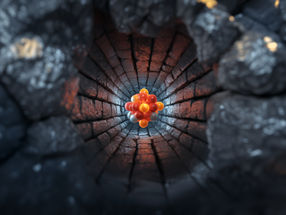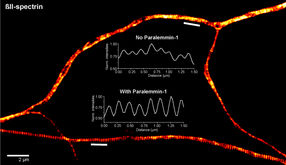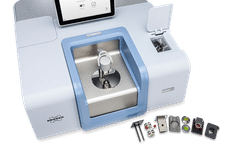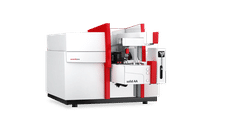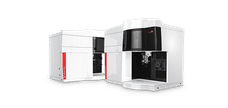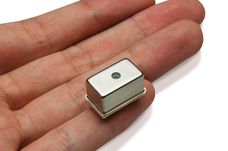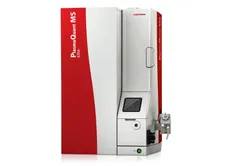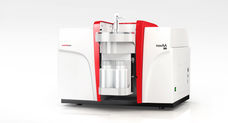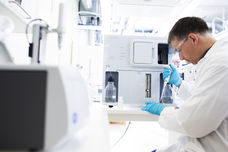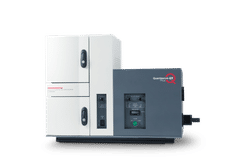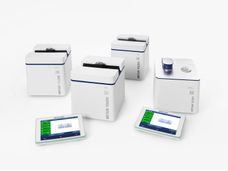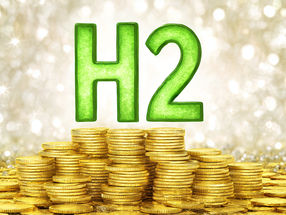A pioneering spectrometer for hard X-rays at European XFEL
"The new spectrometer opens up completely new spectroscopic possibilities at high X-ray energies"
Researchers at the European XFEL have developed a new device for X-ray measurements at high photon energies–a so-called Laue spectrometer. It enables X-ray light with photon energies of over 15 kiloelectronvolts to be detected with improved efficiency and highest precision. This is important for researching technically significant materials that, for example, transport electricity without losses or ensure that chemical processes run more efficiently.
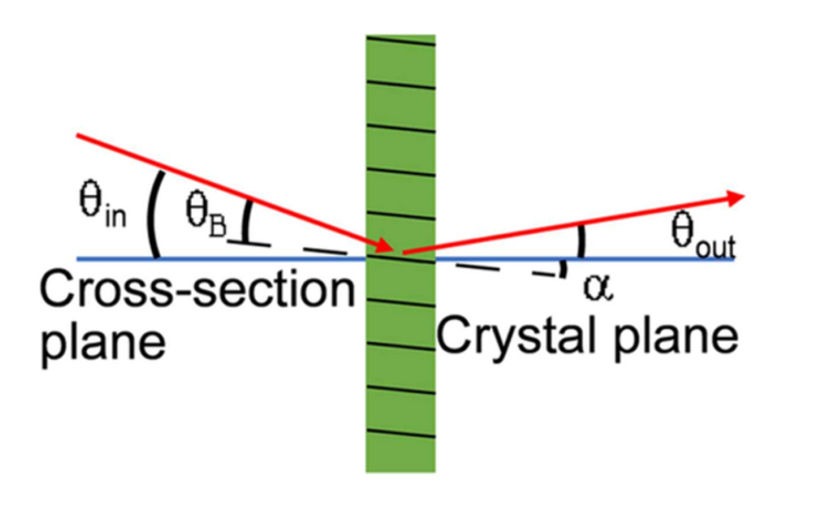
Contrary to regular spectrometer the new Laue spectrometer is diffracting the X-ray beams (red arrows) by atomic layers perpendicular to the surface.
© European XFEL
To unravel the secrets of the world of atoms, molecules and materials in general, scientists often use special measurement devices known as spectrometers. They work by recording the light that objects emit. From the way in which the objects do that, researchers learn a lot about the physical processes that take place in the materials. Particularly revealing is the research with X-ray light, which penetrates deeply in matter and provides information specific to each atomic species. This light is invisible to our eyes, but can be detected and measured using special spectrometers.
The main components of these devices are usually extremely precisely cut crystals made of silicon or germanium. Traditionally, the X-ray spectrometers work in what is known as Bragg geometry: The X-ray light hits the crystal and is then diffracted by the atomic planes parallel to the surface similarly as mirrors reflect visible light. From the direction and intensity of the scattered radiation, the researchers can draw conclusions about the electronic properties of the materials they are analysing.
A unique characteristic of European XFEL is the ability to provide X-ray light with very high energy. However, as the energy of the X-rays increases, the interaction with the crystals becomes smaller, making the measurements challenging. In this high photon energy regime, a large proportion of the X-ray light simply passes through the crystal unused, which is why the performance of X-ray spectrometers using these analysers, known as Johann or Von Hamos spectrometers, decreases rapidly with increasing X-ray energy. They usually only work well up to a photon energy of around 15 kiloelectronvolts (keV).
Researchers at the FXE instrument at European XFEL have now developed a new spectrometer to obtain meaningful results even at energies well above 15 keV. It works in the so-called Laue geometry. This means that the X-rays pass through the crystal and are diffracted by atomic layers perpendicular to the surface. The higher the X-ray energy, the more efficiently the Laue analyser works. “Our optimised design with a fixed curvature and a short bending radius results in analysers without noticeable surface distortions, which considerably simplifies the setup and measurement with the Laue spectrometer,” says Frederico Lima, scientist at the FXE instrument. The performance of this spectrometer greatly surpasses previous designs with dynamically curved Laue analysers.
The newly developed device called High Energy Laue X-ray Emission Spectrometer (HELIOS) is now installed and available to all users at European XFEL. It provides an extremely high precision of about 1.2 x 10-4 at a photon energy of around 18.6 keV. Compared to conventional spectrometers, it achieves a signal strength that is 4 to 22 times higher. This makes it possible to detect particularly interesting electronic transitions in so-called 4d transition metals, which are otherwise very difficult to measure. The 4d transition metals include technically important elements such as niobium, molybdenum, ruthenium, palladium and silver.
“The new spectrometer opens up completely new spectroscopic possibilities at high X-ray energies, only possible at the European XFEL,” Lima says. Examples include the measurement of photocatalytic properties of nanoparticles containing 4d metals, research into dye sensitisation for solar cell applications, and the investigation of strongly correlated materials that could be used as superconductors or as battery cathodes or anodes for efficient energy storage.
Original publication
X. Huang, Y. Uemura, F. Ardana-Lamas, P. Frankenberger, M. Knoll, H. Yousef, H. Wang, S. Heder, M. Nachtegaal, G. Smolentsev, L. Wang, L. F. Zhu, C. Milne, F.A. Lima; "A high-energy Laue X-ray emission spectrometer at the FXE instrument at the European XFEL"; Journal of Synchrotron Radiation, Volume 32, 2025-3-31
These products might interest you
See the theme worlds for related content
Topic World Spectroscopy
Investigation with spectroscopy gives us unique insights into the composition and structure of materials. From UV-Vis spectroscopy to infrared and Raman spectroscopy to fluorescence and atomic absorption spectroscopy, spectroscopy offers us a wide range of analytical techniques to precisely characterize substances. Immerse yourself in the fascinating world of spectroscopy!

Topic World Spectroscopy
Investigation with spectroscopy gives us unique insights into the composition and structure of materials. From UV-Vis spectroscopy to infrared and Raman spectroscopy to fluorescence and atomic absorption spectroscopy, spectroscopy offers us a wide range of analytical techniques to precisely characterize substances. Immerse yourself in the fascinating world of spectroscopy!















